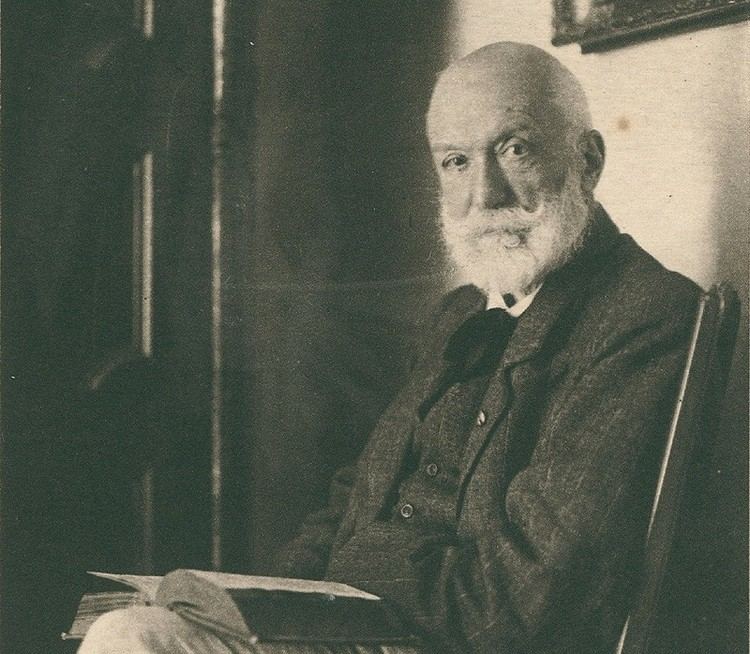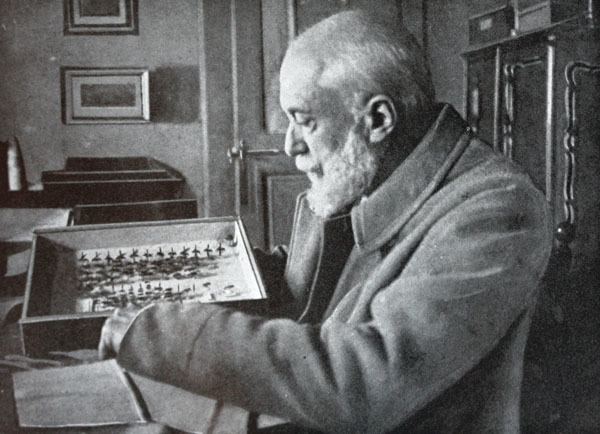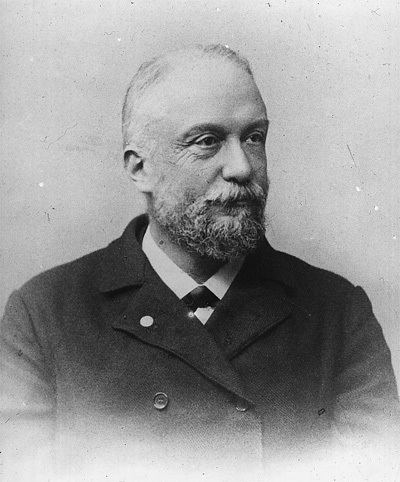Nationality Swiss Children Oscar Louis Forel | Name Auguste Forel Grandchildren Armand Forel | |
 | ||
Fields MyrmecologyNeuroanatomistPsychiatrist Influenced Eugen BleulerHans HunzikerAdolf Meyer Books The Sexual Question, Hypnotism; Or - Suggesti, Ants and Some Other Ins, Ants and Some Other Ins, Hygiene Of Nerves And Mind Similar People Eugen Bleuler, Adolf Meyer, William James, John Dewey, Sigmund Freud | ||
Auguste forel and the bah faith 6 6
Auguste-Henri Forel (1 September 1848 – 27 July 1931) was a Swiss myrmecologist, neuroanatomist, psychiatrist and eugenicist, notable for his investigations into the structure of the human brain and that of ants. For example, he is considered a co-founder of the neuron theory. Forel is also known for his early contributions to sexology and psychology. From 1978 until 2000 Forel’s image appeared on the 1000 Swiss franc banknote.
Contents
- Auguste forel and the bah faith 6 6
- Auguste forel and the bah faith 1 6
- Biography
- Scientific work
- References

Auguste forel and the bah faith 1 6
Biography

Born in villa La Gracieuse, Morges, Switzerland, to Victor Forel a pious Swiss Calvinist and Pauline Morin, a French Huguenot he was brought up under a protective household. At the age of seven he began to take an interest in insects. He went to school at Morges and Lausanne before joining the medical school at Zurich. Forel had a diverse and mixed career as a thinker on many subjects. At Zurich he was inspired by the work of Bernhard Aloys von Gudden (1824-1886). In 1871 he went to Vienna and studied under Theodor Meynert (1833-1892) but was disappointed by Meynert. In 1873 he moved to Germany to assist Gudden at his Munich Kreis-Irrenanstalt. He improved upon various techniques in neuro-anatomy including modifications to Gudden's microtome design. In 1877 he described the nuclear and fibrillar organization of the tegmental region which is now known as Campus Foreli. He then became a lecturer at the Ludwig-Maximilians-Universität in Munich while also continuing his researches on ants. His first major work was a 450 page treatise on the ants of Switzerland which was published in 1874 and commended by Charles Darwin. He was appointed professor of psychiatry in 1879 at the University of Zurich Medical School. He not only ran the Burghölzli asylum there, but continued to publish papers on insanity, prison reform, and social morality. The asylum was very poorly run with corrupt staff and poor standards before Forel took over and converted to be among the best in Europe. Forel named his home as La Fourmilière —the Ant Colony. Around 1900 Forel was a eugenicist. Forel suffered a stroke that paralyzed his right side in 1912, but he taught himself to write with his left hand and was able to continue his studies. By 1914 he was a good friend of the eminent British entomologist Horace Donisthorpe, with whom he stayed in Switzerland; his ardent socialist views frequently caused political arguments between the two. After hearing of the religion from his son in law Dr. Arthur Brauns (married to his daughter Martha), in 1920 he became a member of the Bahá'í Faith, abandoning his earlier racist and socialist views saying,

This is the true religion of human social good, without dogmas or priests, uniting all men on this small terrestrial globe of ours. I have become a Bahá’í. May this religion live and prosper for the good of mankind; this is my most ardent wish.
In 1921 he received a letter from `Abdu'l-Bahá about the differences between the mineral, vegetable, animal and human worlds, the spiritual nature of man and proofs of the existence of God. He was an agnostic and was strongly anti-capitalist diverging from the Bahá’í religion of today.
Forel married Emma Steinheil in August 1883 and they had four daughters and two sons. In 1903 Forel and his family moved to live in his home, La Fourmiliere, in Yvorne near Lake Geneva. He died there on July 27, 1931 and was cremated in Lausanne two days later.
Scientific work
Forel's prize essay on the ants of Switzerland was published in three parts in a Swiss scientific journal, beginning in 1874. The work was reissued as a single volume in 1900, at which time it was also translated into English. His myrmecological five-volume magnum opus, Le Monde Social des Fourmis, was published in 1923.
Forel's predilection for finding in ants the analogs of human social and political behaviors was always controversial. In the foreword to his 1927 edition of British Ants: their life history and classification, Donisthorpe opined, "I should wish ... to protest against the ants being employed as a supposed weapon in political controversy. In my opinion an entomological work is not the appropriate means for the introduction of political theories of any kind, still less for their glaring advertisement. But in 1937, the work was excerpted in Sir J.A. Hammerton's Outline of Great Books with praise for its relevance to the study of human psychology and as "the most important contribution to insect psychology ever made by a single student."
Forel realized from experiments that neurons were the basic elements of the nervous system. He found that the neuromuscular junction communicated by mere contact and did not require the anastomosis of fibres. This came to be called the Contact Theory of Forel. The word "neuron" was coined by Wilhelm von Waldeyer who published a review of the work of Forel and others in 1891. Waldeyer synthesized ideas without actually conducting any research himself and published it in Deutsche medizinische Wochenschrift a widely read journal which made him popular. Forel was very bitter about Waldeyer's achievement of fame that it is thought to have contributed to the decline in his interest in neuroanatomy and neurology. Less controversially, Forel first described in 1877 the zona incerta area in the brain. He gave it this name as it a "region of which nothing certain can be said".
Forel International School is named after him.
